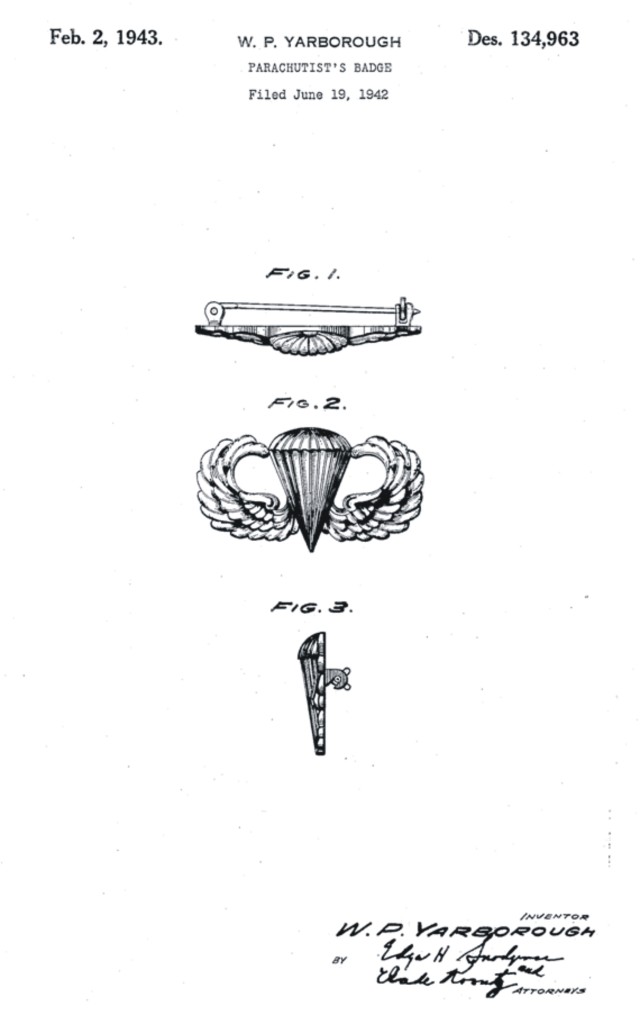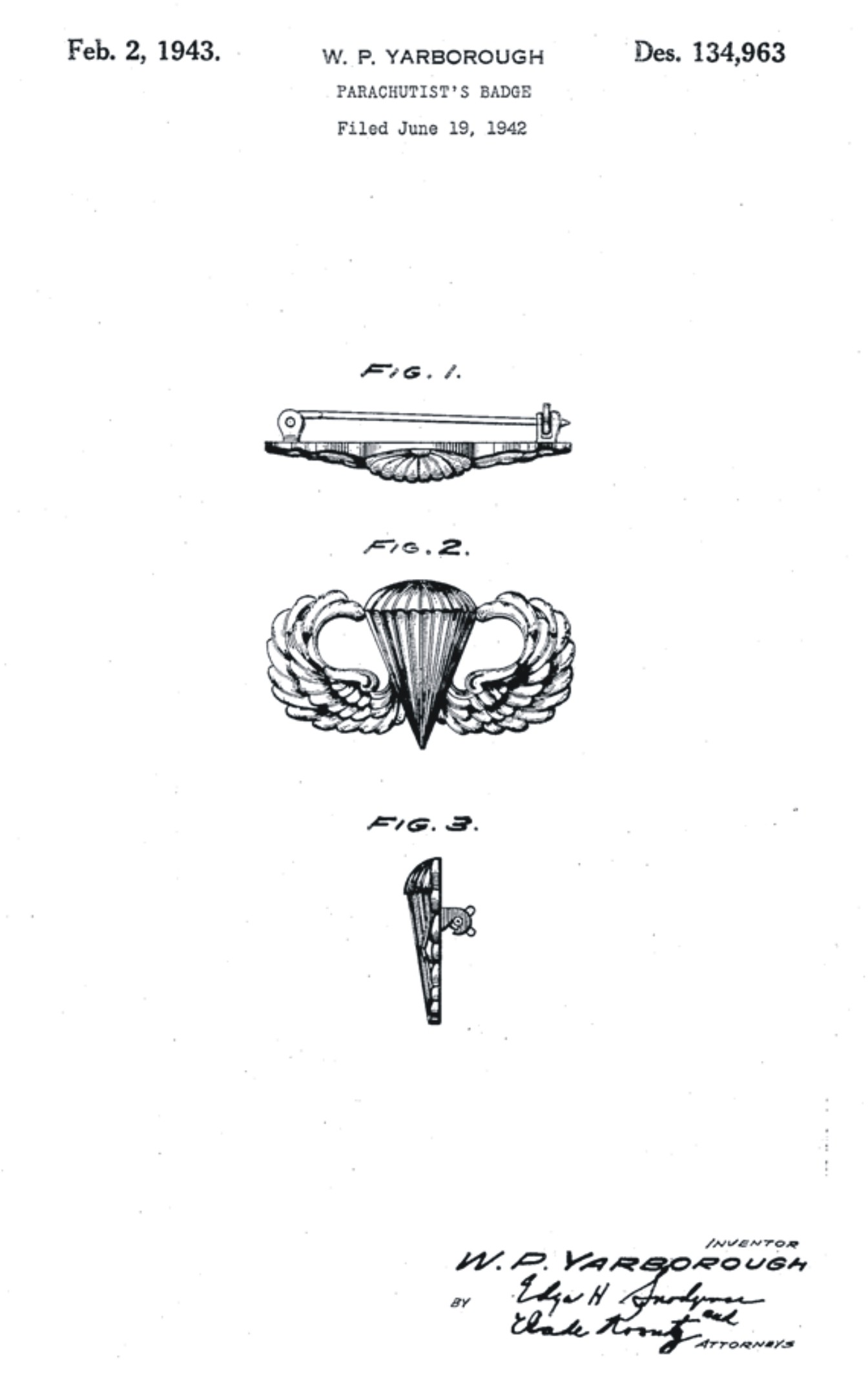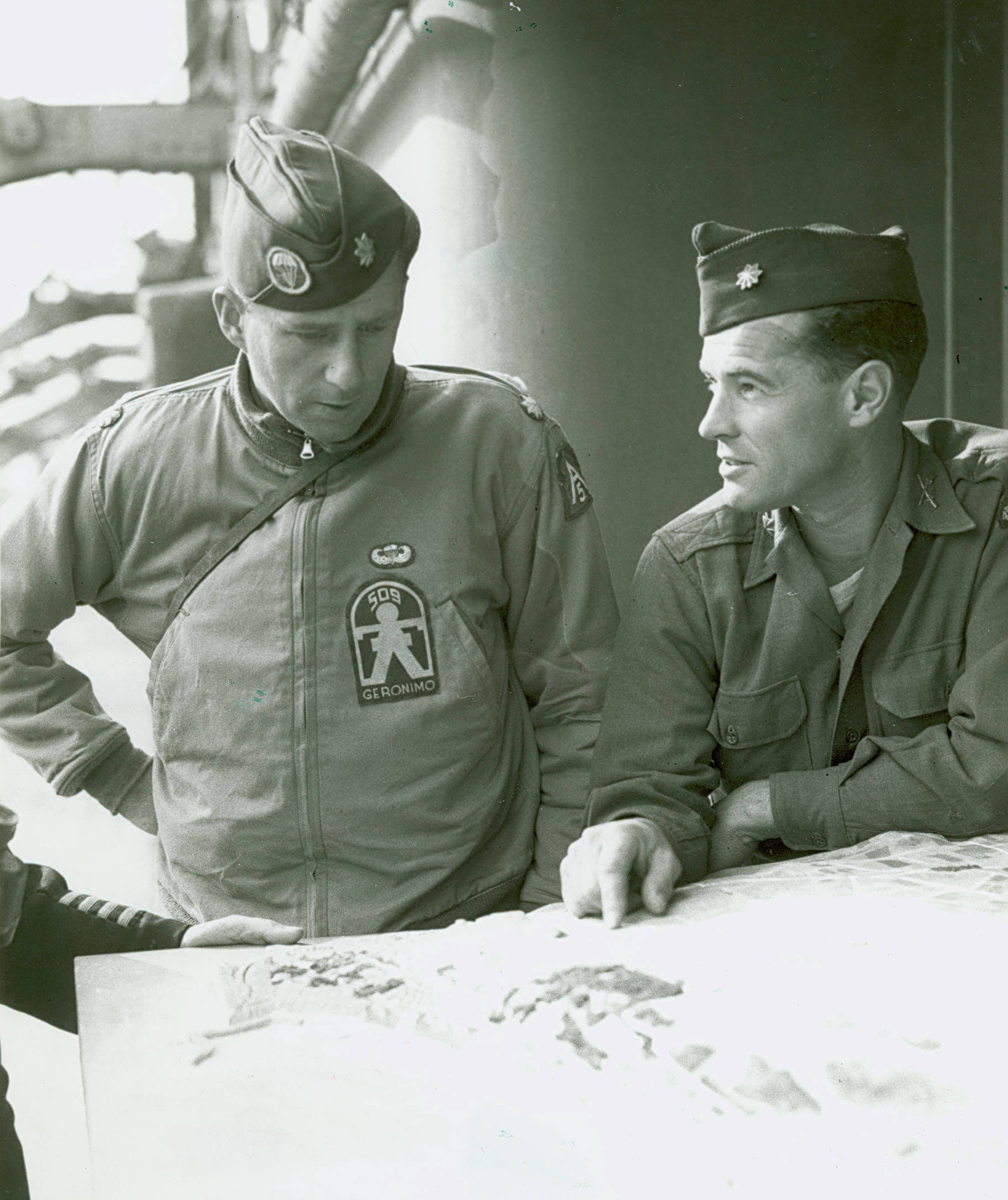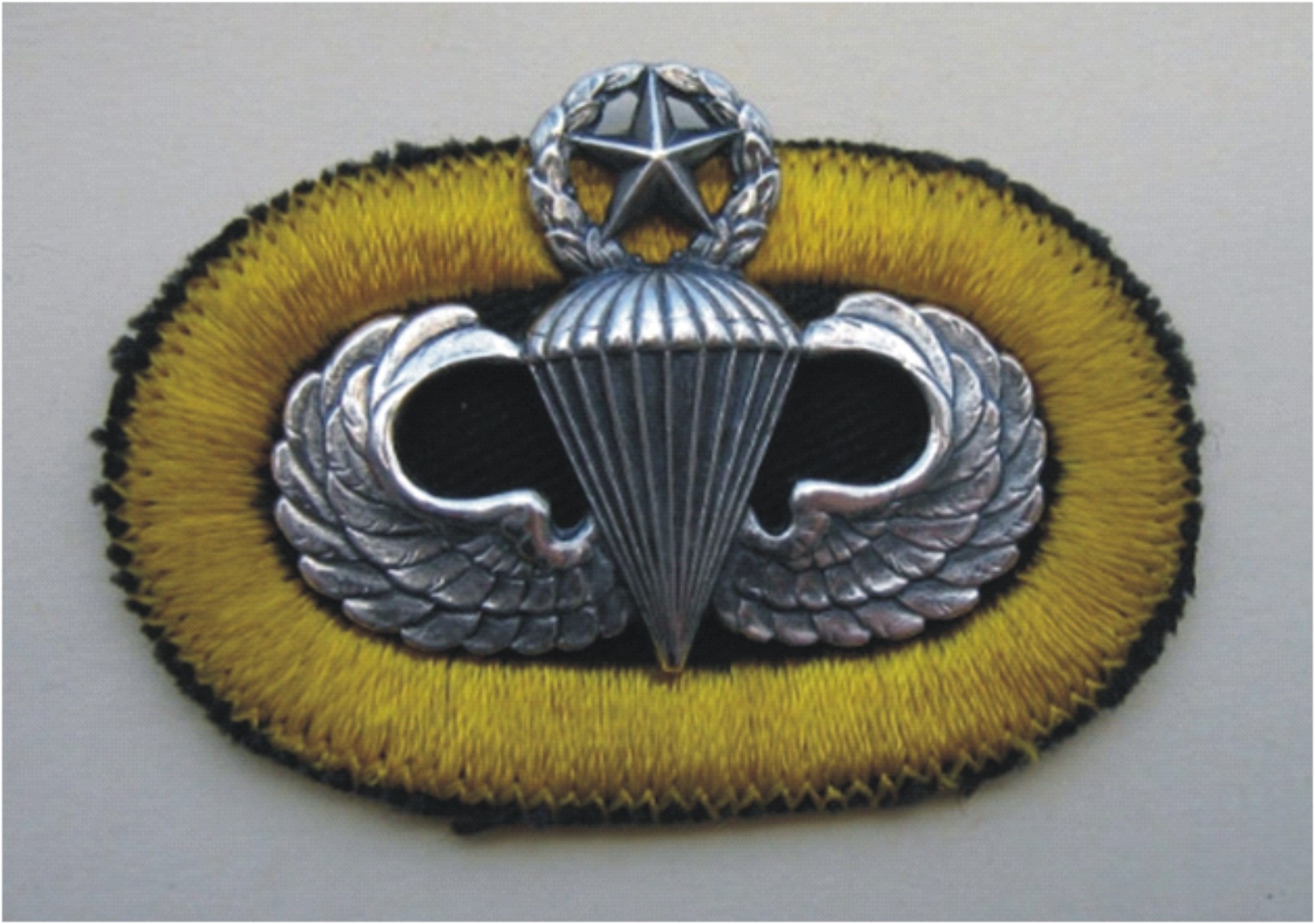Army combat and special skill badges reflect the achievements, in peace and war, of U.S. Army Soldiers. The ArmyAca,!a,,cs oldest special skill badge is the parachutist badge, formally approved on March 10, 1941, and awarded to those who have completed the required proficiency tests or who have participated in at least one combat parachute jump.
In 1940, volunteers from the 29th Infantry Regiment, Fort Benning, formed the parachute test platoon and later became the cadre for the ArmyAca,!a,,cs first combat airborne unit, the 501st Parachute Battalion, activated on October 1. Its commander, Major (later Major General) William M. Miley, quickly contacted the Heraldry Branch of the Office of the Quartermaster General to request a badge to recognize soldiers who had completed jump training. In March 1941, not satisfied with the designs proposed, Major Miley sent Captain (later Lieutenant General) William P. Yarborough to Washington to procure an approved badge. Captain Yarborough had Major MileyAca,!a,,cs authority to approve any design he considered acceptable.
Ordered to Washington on Monday, March 3, , Captain Yarborough (after many attempts) prepared a sketch acceptable to all; obtained a finished production design from the Heraldry Branch, Office of the Quartermaster General; initiated manufacture of the badges; and secured final War Department approval in one week! He spent the entire week, eight hours a day, hand-carrying the design in and out of War Department offices, doggedly waiting until each office provided its approval, and then going to the next office to wait until its approval was obtained. His efforts paid off early in the week of March 9-15. On Monday the 10th came final authorization for the parachutist badge.
Captain Yarborough later obtained a design patent to protect the badge from unauthorized exploitation. In addition, he established another airborne tradition when he designed the first background oval for wear with the badge by soldiers on jump status.
While the original design of the badge has not changed, it has been supplemented to recognize significant achievements in airborne service. In 1949 a star and a wreath were added above the canopy to indicate degrees of qualification. The Senior Parachutist badge (with a star above the canopy) is awarded to soldiers who complete additional requirements, including making 30 jumps (night, combat equipment, mass tactical, as jumpmaster), serving 24 months on jump status, and graduating from a Jumpmaster Course. The Master Parachutist badge (with a star surrounded by a laurel wreath above the canopy) requires 65 jumps (night, combat equipment, mass tactical, as jumpmaster), 36 months on jump status and graduation from a Jumpmaster course.
Bronze-colored stars representing participation in combat jumps and a gold star for five combat jumpsAca,!"long worn unofficially on wingsAca,!"were approved by Headquarters, Department of the Army on December 14, 1983.
Earning the parachutist badge remains a significant personal achievement. The fact that the exact badge first presented in 1941 to the parachutists of the 501st Parachute Battalion is also presented to 21st century soldiers who jump from aircraft in flight testifies to the enduring contributions of the airborne and the importance of history and tradition to the U.S. Army.
ABOUT THIS STORY: Many of the sources presented in this article are among 400,000 books, 1.7 million photos and 12.5 million manuscripts available for study through the U.S. Army Military History Institute (MHI). The artifacts shown are among nearly 50,000 items of the Army Heritage Museum (AHM) collections. MHI and AHM are part of the: Army Heritage and Education Center (AHEC), 950 Soldiers Drive, Carlisle, PA, 17013-5021.










Social Sharing